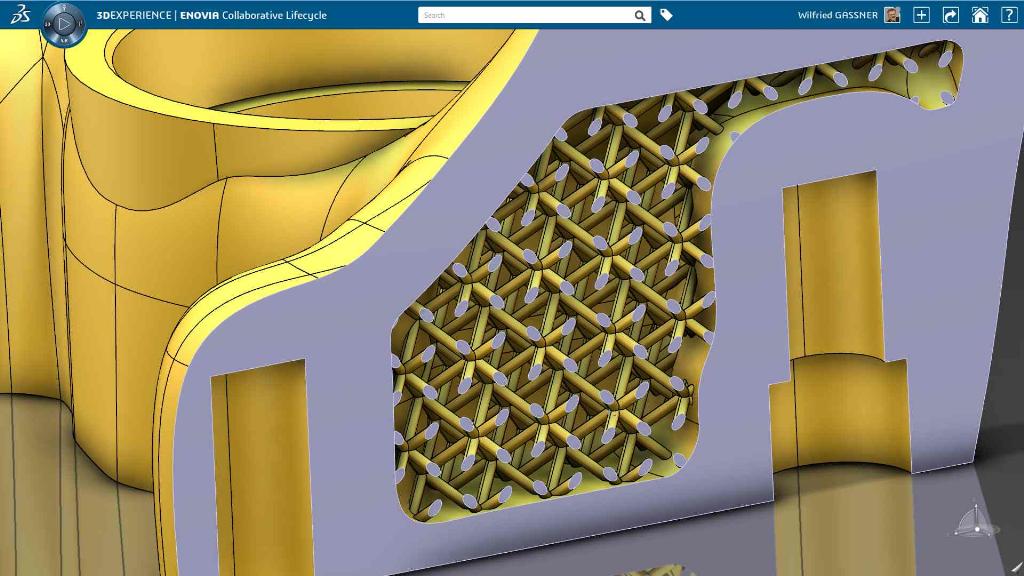It’s a material whirl!

Freelance editor, Judith Knappe looks at how aircraft manufacturing companies are accelerating the use of additive manufacturing to produce prototypes, as well as production components to deliver lighter and less expensive parts that meet technological, performance, safety and cost requirements.
Additive manufacturing is pushing the limits of conventional production. Instead of processing materials, some of which are very expensive, a 3D printer starts from scratch. Layer by layer it forms parts which are created from high-performance materials where previously traditional production processes were unsuitable. Sophisticated designs and ultra-lightweight components can be designed with a focus on an idea without being constrained by production specifications. This is also playing an increasingly important role in aircraft manufacturing.
Up to now, light materials have often been more expensive than conventional materials. However, 3D printing can be used to optimise components so that manufacturing costs are reduced even though weight and valuable natural resources can be saved. There are also completely new possibilities in terms of design: even difficult and complex geometrics can be accomplished – for example, those that are oriented to the organic shapes of nature and can be optimally adapted to different requirements. Generative design plays an important role. This optimisation potential of parameters such as efficiency, design, weight and durability is particularly interesting for areas with growth potential. A new Bitkom study, in which Dassault Systèmes participated, confirms that industries such as aerospace, medical and consumer goods are benefiting from the new manufacturing process.

However, companies need strong application tools to exploit the full potential. This includes, most of all, systems and IT infrastructures that are capable of controlling the process. Qualified partners are recommended to support the implementation of new processes. There are also different types of 3D printing: companies have to consider what they are buying, whether they are suitable for the classic use of polymers or whether they are relying on new materials in 3D printing, such as carbon or metallic materials.
The additive manufacturing process is particularly efficient if it is based on a digitally consistent database. By organising the design data based on a platform, for example, changes to models are automatically incorporated into the subsequent processes. This avoids errors and redundancies, which increases data quality and process reliability. This means that this data can also be safely used in downstream processes such as production planning and control. Overall, the database will become more refined and the networking between workgroups and sites will be much better. This approach makes quality assurance significantly easier and more efficient.
Digital validation
The 3DEXPERIENCE platform now enables virtual validation of the entire additive manufacturing process. This means that companies can digitally validate and store all parameters along the entire value chain of a component. This makes the entire production process replicable and scalable, and provides a central database that precisely defines requirements for upstream and downstream processes. The partnership between Dassault Systèmes and the Airbus subsidiary APWORKS combines 3D design with engineering and simulation, enabling even better components for additive production.
Additive manufacturing combined with the 3DEXPERIENCE platform not only enables new designs to be created, but also allows the virtual modelling and simulation of the manufacturing process. For example, critical points in production can be identified, or even the properties of the end product can be tested in logistics. The benefits subsequently, are fast analysis and agile interventions, the validation is partially synchronised with the processes at the physical production site.
In aircraft manufacturing, a huge cost saving is achieved by direct production on site. Should an aircraft fail due to a missing spare part, rent and fees will be charged resulting in very high costs per day. Sometimes spare parts can only be delivered after months – the missing spare parts therefore generate high total costs. With 3D printing it is possible to considerably reduce downtime and the resulting production costs by short production times of a few days. In addition, production can be carried out at the sites themselves as required, which reduces storage and delivery costs even further. In addition to the growth markets mentioned above, the process is of particular importance for manufacturers of machines and plants. They can, for example, use it to build combined production plants. A machine could thus perform 3D printing, surface refinement and heat treatment.
Changing states

The cooperation between Dassault Systèmes and APWORKS is an important step in this respect. It enables quality to be reproduced and certification standards to be established. In addition, additive manufacturing will also contribute to the fact that customer-specific production will become more and more popular. In the future, customers will be able to select and individualise designs from a catalogue or on websites - because batch size 1 can be produced without any problems. But the trend goes much further: bio printing is on the advance, 3D printing with organic substances has been further developed and it may soon be possible to print living cells and whole organs.












